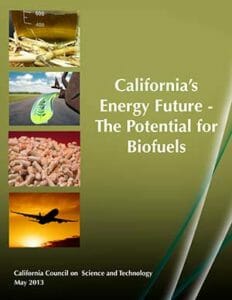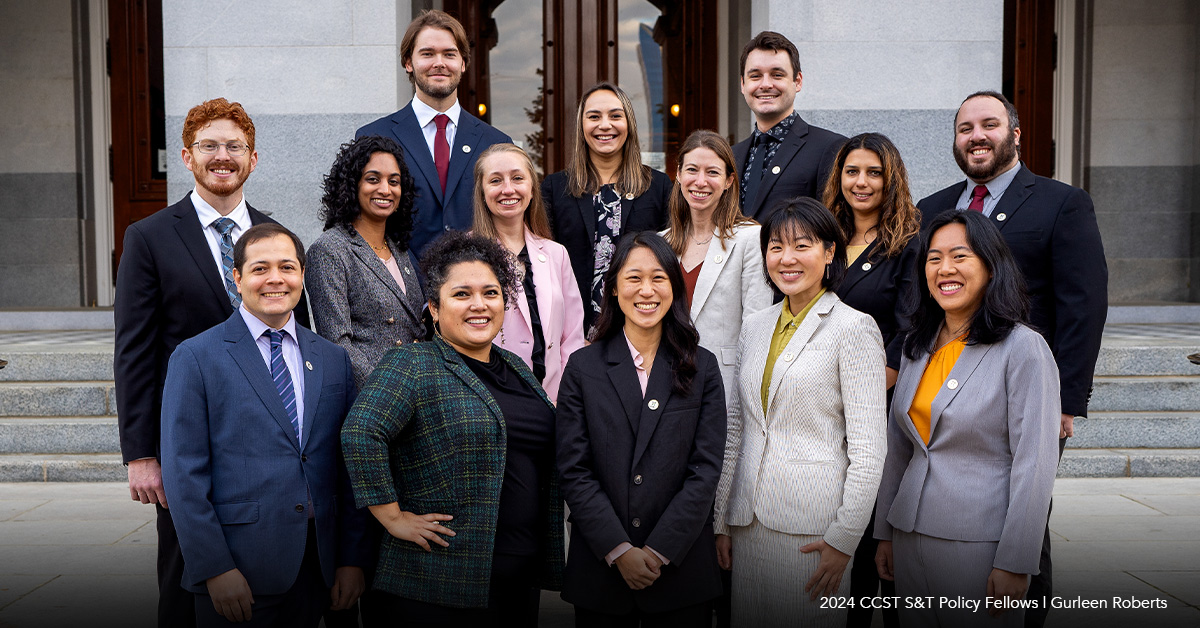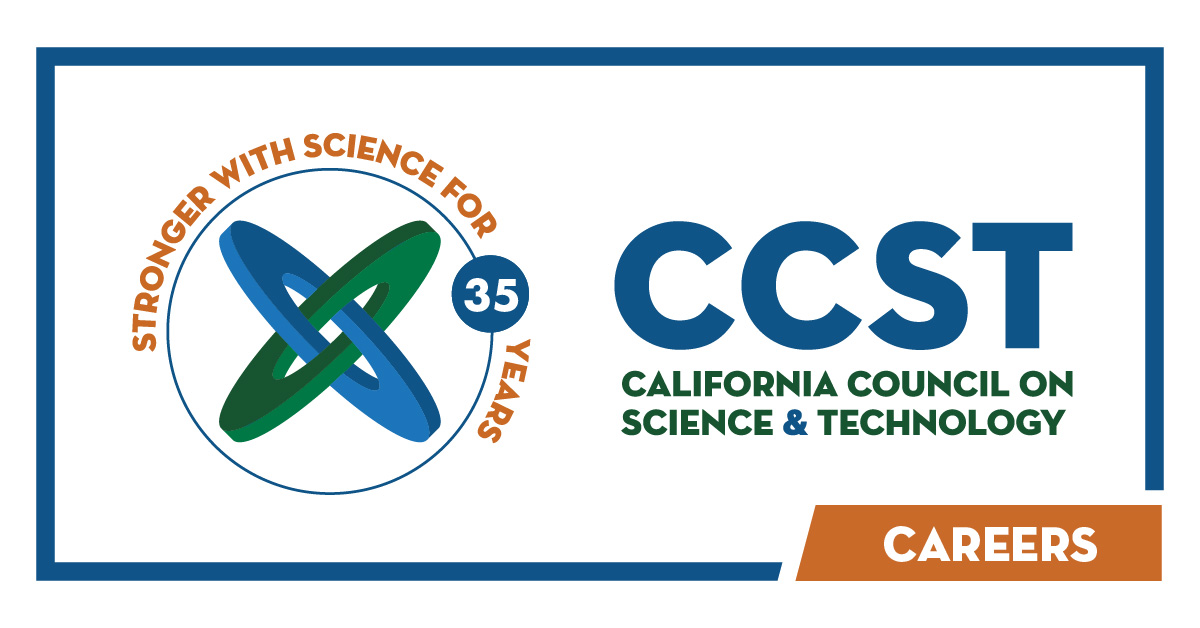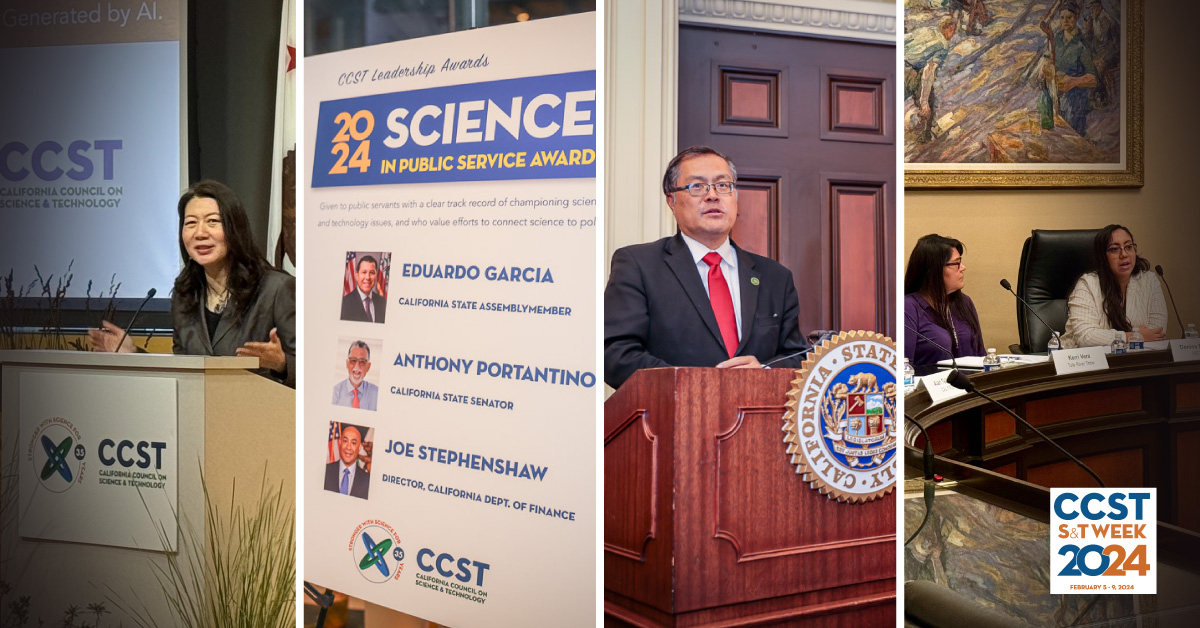CCST Report Examines Role of Biofuels in California’s Energy Future
May 31, 2013 | CCST Newsroom, Press Releases | Contact: M. Daniel DeCillis
 CCST has released the seventh and final report in its California’s Energy Future (CEF) project, “California’s Energy Future: The Potential for Biofuels“. The CEF project seeks ways the State could meet the mandated reductions of the state’s greenhouse gas (GHG) emissions to 80 percent below 1990 levels by 2050, exploring possible energy strategies for California through in-depth examinations of different technology scenarios. The focus of this report is an assessment of the potential for fuels produced from renewable biological resources to contribute to the energy needs of California, particularly for transportation.
CCST has released the seventh and final report in its California’s Energy Future (CEF) project, “California’s Energy Future: The Potential for Biofuels“. The CEF project seeks ways the State could meet the mandated reductions of the state’s greenhouse gas (GHG) emissions to 80 percent below 1990 levels by 2050, exploring possible energy strategies for California through in-depth examinations of different technology scenarios. The focus of this report is an assessment of the potential for fuels produced from renewable biological resources to contribute to the energy needs of California, particularly for transportation.
“California can supply a substantial amount of biofuel from in-state resources through the use of residual biomass and purpose-grown energy crops,” said lead author Heather Youngs, a Senior Fellow at the Energy Biosciences Institute (EBI) at UC Berkeley. “However, judicious use of such feedstocks will be required to obviate long-term sustainability concerns and maximize efficient resource management.” Youngs co-authored the study with EBI Director Christopher R. Somerville, Philomathia Professor of Alternative Energy at UC Berkeley.
Biofuels can be produced using agricultural wastes, forest thinnings and harvest residues, municipal wastes, and purpose-grown energy crops such as perennial grasses and short rotation woody crops. The degree to which biofuels may be able to assist California in meeting its emission goals depends on how demand for fuels overall rises or falls by 2050. Under a reduced future demand scenario, in which the state focuses on high efficiency and electrification, biofuels could reduce emissions by 50-85%, assuming that feedstocks are not limited. If demand continues to rise however, in a “business-as-usual” scenario without increased efficiency measures, then the reduction in emissions from cellulosic ethanol (E85) and conventional biodiesel will likely fall short of the State’s emission goals.
“Technologies can be deployed to produce low carbon biofuels to meet demand by 2050,” said Youngs. “Whether this deployment occurs in California depends on many factors, including the biomass supply and economic considerations.”
The report notes that effective large-scale use of biomass for energy in California will require sustainable resource management. The possible impacts of bioenergy production are projected to be similar to those for modern agriculture and forestry and light industrial processing. Possible benefits from large-scale biomass production in California are potentially both economic and environmental, hinging on sustainable practice and small- to medium-scale deployment.
Previous CEF reports have focused on nuclear power, transportation energy use, electricity from renewable energy and fossil fuels with carbon capture and sequestration, and advanced technologies for achieving deep GHG reductions. The CEF project is funded by the California Energy Commission, the S.D. Bechtel Foundation and the California Air Resources Board; reports have been completed by committees of volunteers from major energy research institutions in the state. The biofuels report, like the earlier ones in the series, notes that no matter what strategy or combination of strategies are employed, achieving California’s emissions targets by 2050 will require significant levels of research, development, invention and innovation.
With the completion of the last subject-specific report in the first CEF series, the focus is now on the California’s Energy Future Policy project, which is undertaking a similarly detailed analysis of specific policy requirements to achieve California’s goals of reduced emissions by 2050, with funding from the Cummings Family Foundation.






